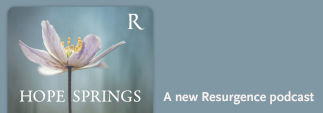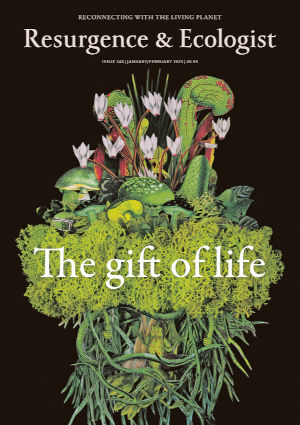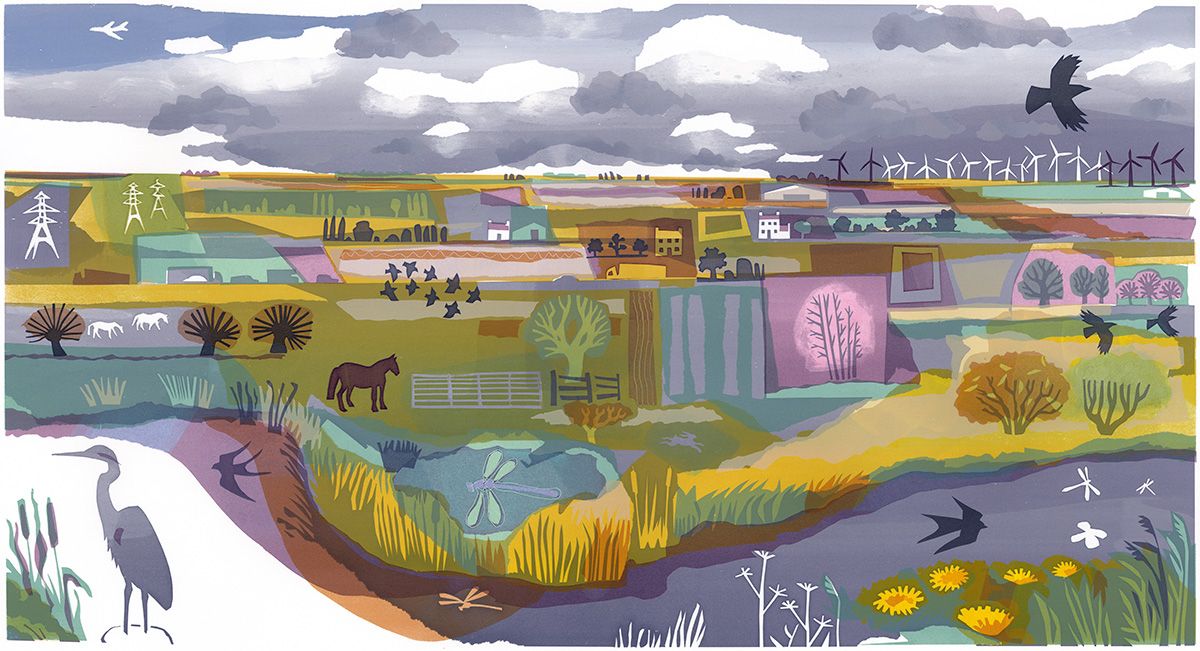Tom Heap, presenter on BBC One’s Countryfile and Radio 4’s Rare Earth, has written an enjoyable and skilful book on land use in the UK and globally. In the space of ten chapters – spanning issues such as solar energy, arable and livestock farming, peat and carbon, woodlands, Nature and behavioural change – Land Smart sets out the key dimensions of what WWF refers to as “the great food puzzle”. Heap draws on personal experience, interviews with experts and practitioners, and academic literature, with a tone throughout that eschews ideological extremes and respectfully explores views on all sides of thorny debates, from bioenergy to dietary change and regenerative agriculture.
I particularly value how Heap includes first-hand accounts of visits to pioneering farms in the UK and interweaves these with the broader global context. What’s more, he illustrates how decisions in the UK can impact in other geographies, such that land use changes in the UK cannot be considered in isolation from their effect elsewhere. We live in a globally connected world, after all.
Heap comes across as the kind of affable, grounded and reasonable person that the French philosopher Michel de Montaigne might have affectionately referred to in a different era as un homme moyen sensuel. He is an avid gardener, he understands the experiences of farmers, and he eats some meat of good quality but not as much as previously – all perspectives that ground him in an inclusive and fair-minded understanding of the issues. But Heap has also had access to some of the most fascinating and innovative people – in the UK and across the world – doing inspiring work and showing that another future is possible (following the same logic as Heap’s previous book and series, 39 Ways to Save the Planet).
For me, Land Smart shines a light on two key issues. The first is the way Heap simultaneously embraces some of the more ambitious examples of regenerative and agroecological agriculture in the UK, while questioning whether they might in fact inadvertently drive agricultural expansion elsewhere, for example in the tropics. This is a moot point for many in the food systems community who are passionately committed to the joyful revolution under way in agriculture towards these kinds of more sustainable practices. But this is an important line of enquiry that needs to be aired, as is done by Heap here.
The second issue concerns biofuels and bioenergy. Unusually, these earn sustained and clear-sighted criticism as a poor use of land, and indeed at times as net negative for the climate and biodiversity – challenging the claims of their proponents. Heap’s strong case for ceasing most forms of biofuel and bioenergy is compelling and convincing. I hope readers in the UK and EU take note, as we chart our way towards the UK’s 2030 net zero commitments (as well as to the need for dietary shifts), or towards the reform of the EU’s Common Agricultural Policy.
With nuance and wit, Land Smart sets out the choices and trade-offs as we seek to navigate to a better future. It also highlights the many benefits of a more sustainable and fairer food and land use system. Critically, the book leads one to the conclusion that reforms to the current system must be carried out with all of society, farmers included, genuinely involved and consulted. There will be no value to the kinds of dislocation and culture war that currently risk bedevilling the transition of the food and farming sector. We are all in this together and we will need to work in a spirit of trust and partnership if we are to succeed.
Land Smart: How to Give People and Nature the Space to Thrive by Tom Heap. Atlantic, 2024. ISBN: 9781838953386








